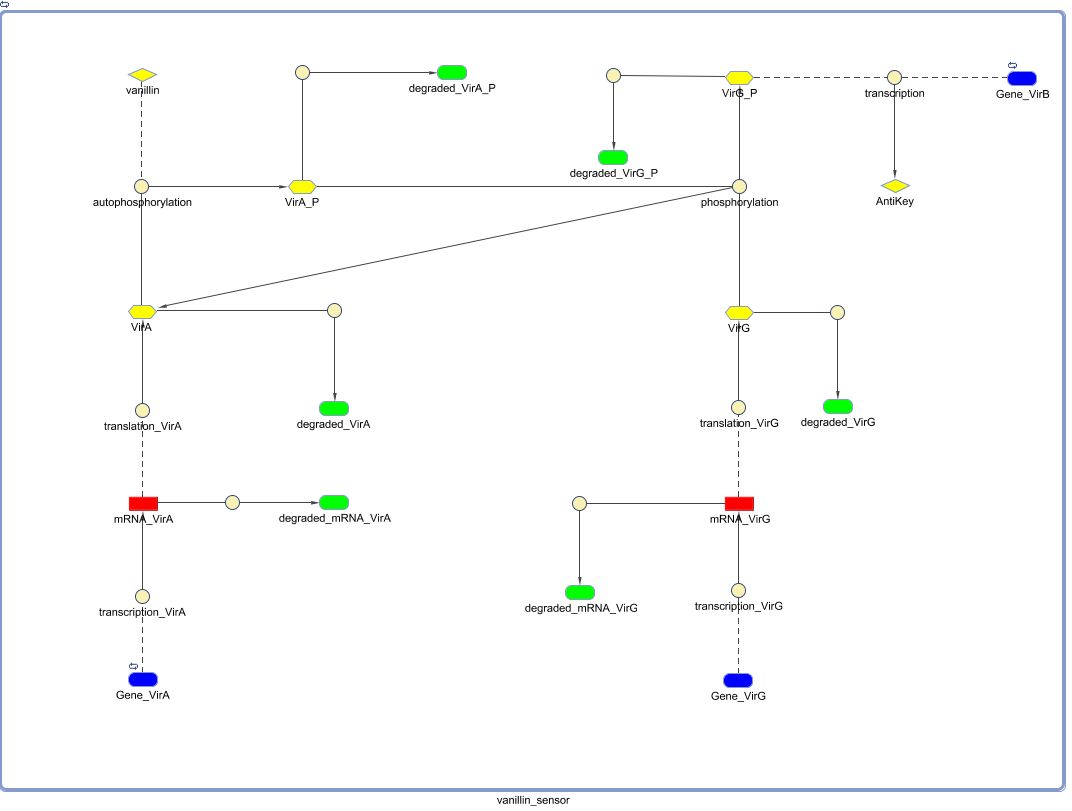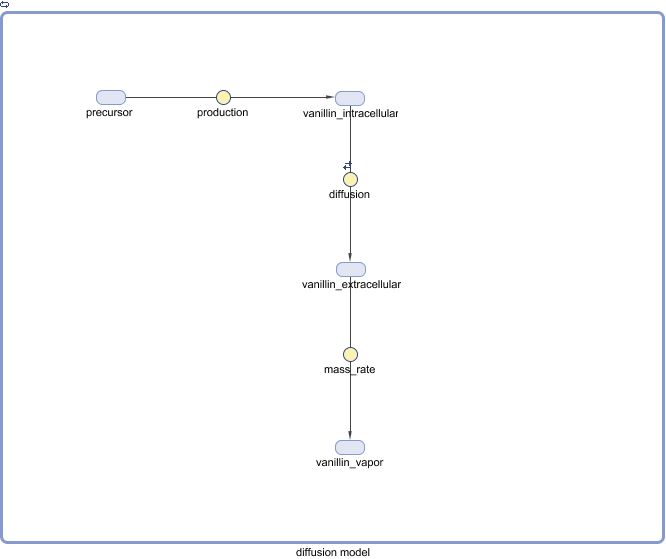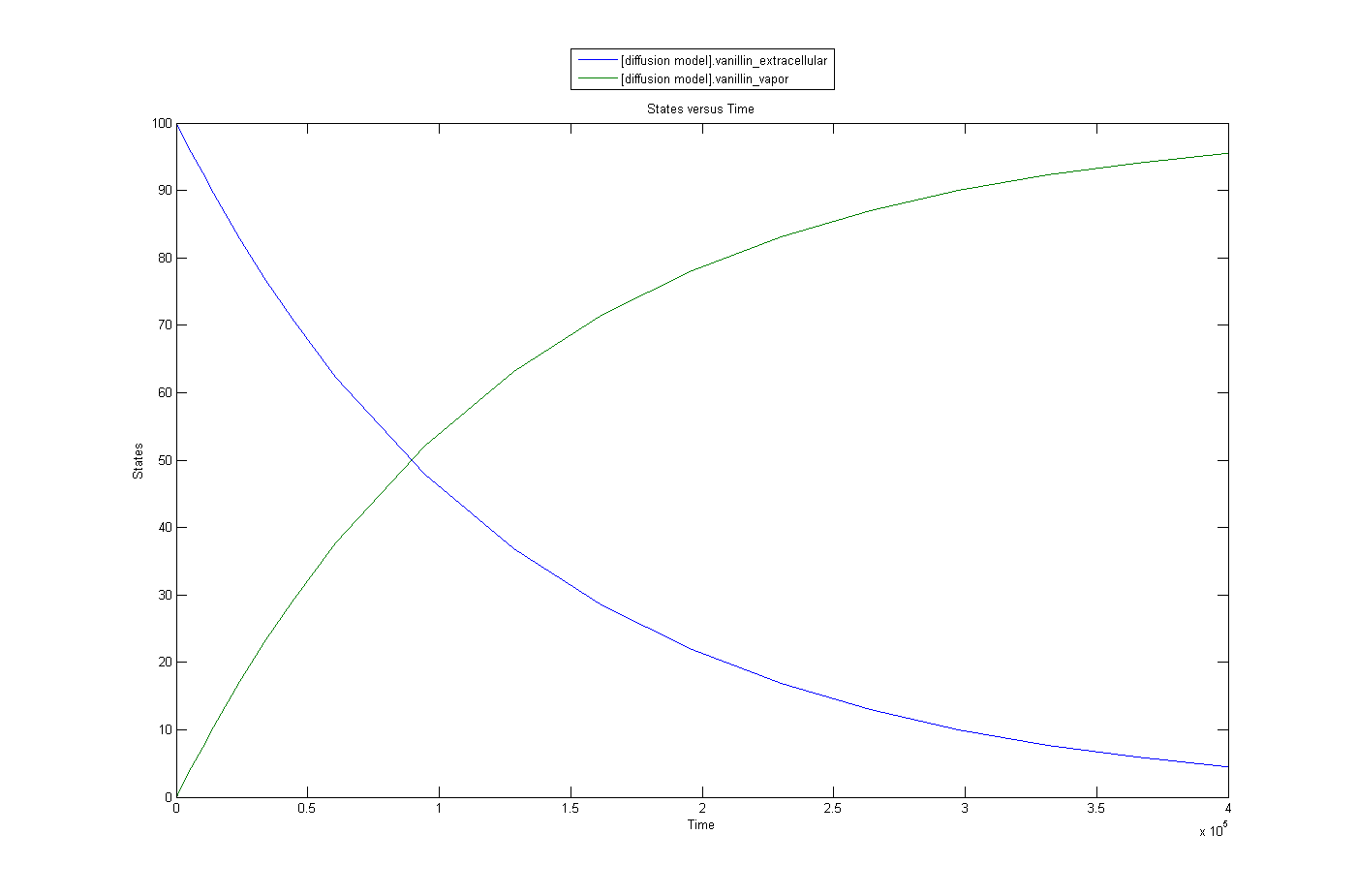Team:KULeuven/Modeling/Vanillin Receptor
From 2009.igem.org
(→Reference) |
(→Mathematical Model) |
||
| Line 31: | Line 31: | ||
| 2.3105E-3 s<sup>-1</sup> | | 2.3105E-3 s<sup>-1</sup> | ||
| | | | ||
| - | | [https://2009.igem.org/Team:KULeuven/Modelling/Vanillin_Production#References [ | + | | [https://2009.igem.org/Team:KULeuven/Modelling/Vanillin_Production#References [4<html>]</html>] |
|- | |- | ||
| d<sub>Proteins</sub> | | d<sub>Proteins</sub> | ||
Revision as of 08:36, 16 September 2009
Contents |
Vanillin Sensor
Biological Model
Mathematical Model
| Name | Value | Comments | Reference |
|---|---|---|---|
| Degradation Rates | |||
| dmRNA | 2.3105E-3 s-1 | [4] | |
| dProteins | 1.9254E-5 s-1 | [3] | |
| Transcription Rates | |||
| ktranscription | 0.00848 s-1 | estimate | [6] |
| ktranslation | 0.167 s-1 | estimate | [6] |
| Phosphorylation Parameters | |||
| kautophosphorylation | 0.00237 (s molecule)-1 | Rate of autophosphorylation of VirA protein | [2] |
| kphosphorylation | 0.00416 s-1 | Rate of phosphorylation of VirG by phosphorylated VirA. | [3] |
Simulation
Vanillin diffusion
Because VirA senses the vanillin concentration in the cytoplasm, it's important to estimate the diffusion of vanillin over the cell membrane. Also because vanillin is not actively removed from the extracellular medium, the rate of evaporation of vanillin is an important figure if we want to regulate the concentration of vanillin in the extracellular medium. A detailed analysis can be found in following document. vanillin_sensing
The most important figures are that the time to reach steady state between the concentration of the inter and extracellular concentration of vanillin in the order of 10 ms, the half-life through evaporation of vanillin in water is 20 hours.
An equivalent model (single cell) of vanillin in the aqueous medium and evaporation was conducted.
Following simulation shows the time-scale of evaporation of vanillin out of the lb(aqueous) medium, the slow evaporation rate of vanillin is not surprising considering its use in the perfume industries as an aroma in the ground note.
If this evaporation rate would show to slow, several active techniques exists to speed the process of removing the vanillin from the extracellular medium.
Reference
[1] A. Vian et al., "Structure of the b-Galactosidase Gene from Thermus sp. Strain T2: Expression in Escherichia coli and Purification in a Single Step of an Active Fusion Protein," Department of Microbiology, University of Washington, Applied and Environmental Microbiology, Jun. 1998, p. 2187–2191
[2] W.T. Peng et al., "The Phenolic Recognition Profiles of the Agrobacterium tumefaciens VirA Protein Are Broadened by a High Level of the Sugar Binding Protein ChvE," Department of Microbiology, University of Washington, JOURNAL OF BACTERIOLOGY, Nov. 1998, p. 5632–5638
[3] S. Jin et al., "Phosphorylation of the VirG Protein of Agrobacterium tumefaciens by the Autophosphorylated VirA Protein: Essential Role in Biological Activity of VirG," Departments of Microbiology and Pharmacology University of Washington, Journal of Bacteriology, Sept. 1990, p. 4945-4950
[4] J.A. Bernstein et al., “Global analysis of mRNA decay and abundance in Escherichia coli at single-gene resolution using two-color fluorescent DNA microarrays,” Proceedings of the National Academy of Sciences of the United States of America, vol. 99, Jul. 2002, pp. 9697–9702
 "
"












